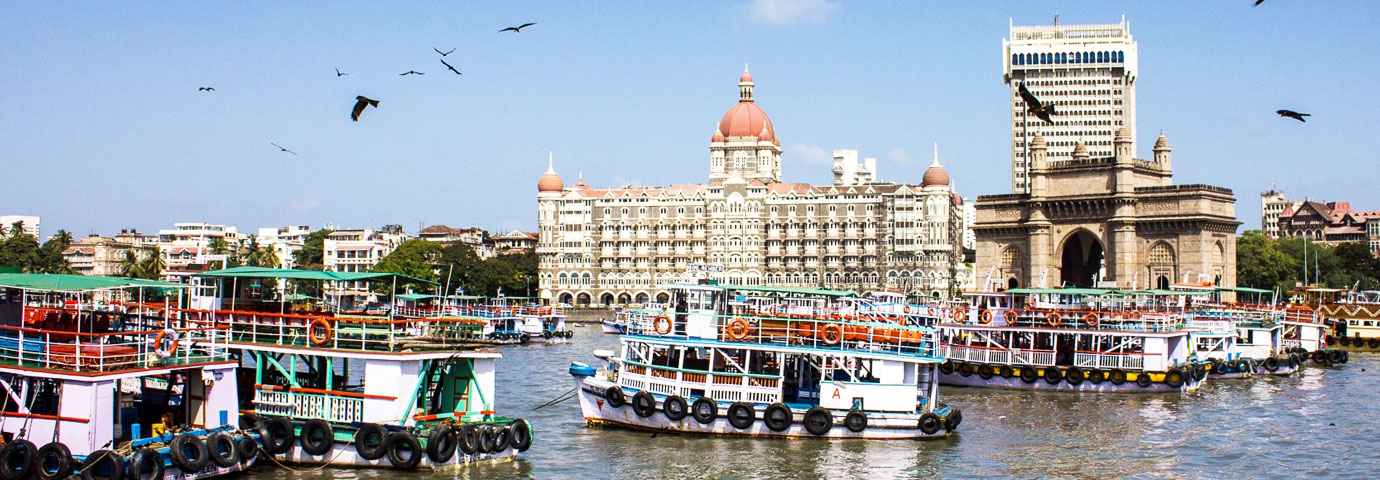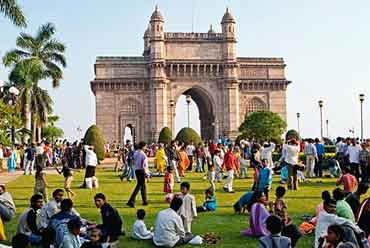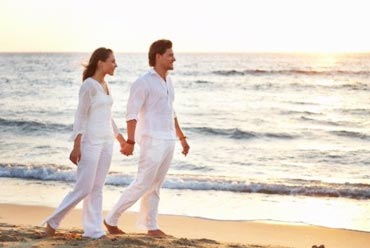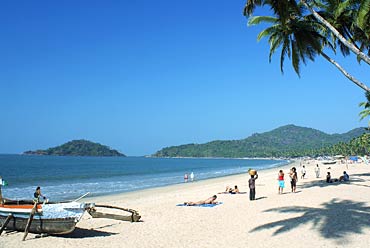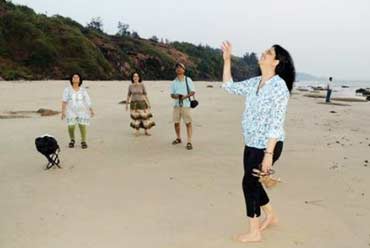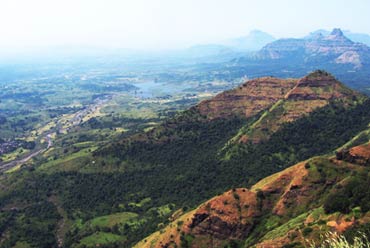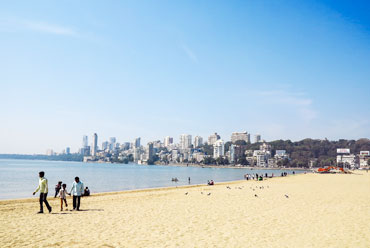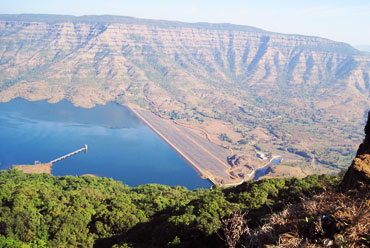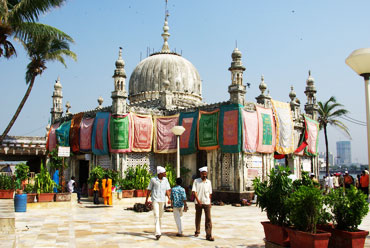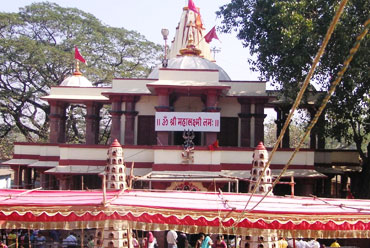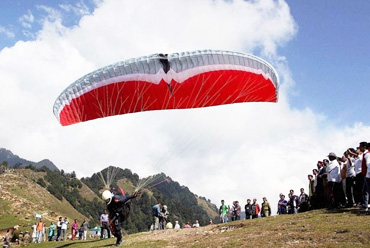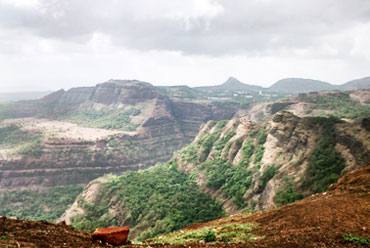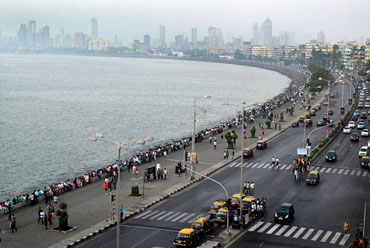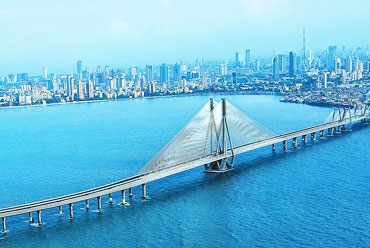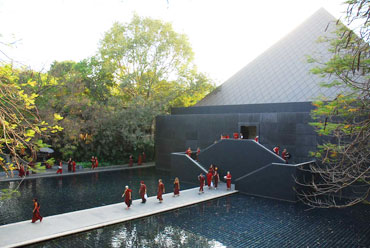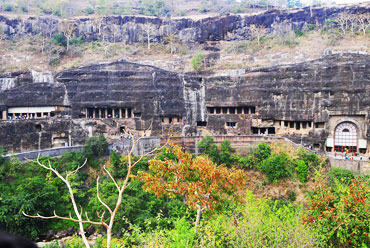Maharashtra, one of the most industrialized states of India, occupies the western and central parts of the country and extends over the Sahyadri mountains; a vast stretch of 720 kilometers of the Arabian sea coast providing it a beautiful backdrop.
The present state of Maharashtra was formed on May 1, 1960 on unilingual principle by carving it out of the erstwhile Mumbai state, which included the predominantly Marathi-speaking areas as the former princely state of Hyderabad as well as the Central Provinces and Berar.
Maharashtra is the third largest state and the second most literate state in the country, according to 1991 census.
Location
Located in the northern center of peninsular India, Maharashtra is surrounded by the Arabian sea in the west, Gujarat and Madhya Pradesh on the north, Madhya Pradesh in the east and Karnataka and Andhra Pradesh on the south. The state extends between the latitudes 15.6° North and 22.1° North and longitudes 72.6° East and 80.9° East.
As far as the geography of Maharashtra goes, much of the state consists of the high Deccan plateau, which is separated from the straight Konkan coastline by 'Ghats'. The Ghats are a succession of steep hills, periodically bisected by narrow roads, and which are often crowded by medieval forts, Panhala Fort; Given their altitude, it is not surprising that the Ghats are home to the state's hill stations.
One of the three major regions of the state is the Sahyadri range with an elevation of 1000 meters. The unique feature of this region is a series of crowning plateaux.
Lying between the Arabian Sea and the Sahyadri Range, Konkan is narrow coastal lowland, just 50 km wide and with an elevation below 200 meters.
The third important region is the Satpura hills along the northern border, and the Bhamragad-Chiroli-Gaikhuri ranges on the eastern border form physical barriers preventing easy movement. These ranges also serve as natural limits to the state.
History
The first instance of human settlement in the regions of Maharashtra was in the lower Paleolithic age when the early men wandered around the river basins of Ghod, Bhima, Pravara, Godavari, and Wainganga. They were mainly hunters, living a nomadic life.
The Mesolithic age forced these people to settle at one place and shift to agriculture for sustenance. They moved towards other river valleys from Tapi where first evidence of agriculture is found to be of around 1700 BC. Jorwe in the Ahmednagar district has many evidences of the people residing in the region at that time. Between 1000 BC and 500 BC, the megalithic culture started to develop in this region. With the advent of the Iron Age in 500 BC, the gradual process towards urbanization started in this region and it was greatly helped by the many trade routes that connected it with north India.
The Chinese traveler Hiun Tsang visited this region in 640-641 BC and was very impressed with the prosperity of this region. During third and fourth centuries BC, the region of Konkan remained under the control of the Mauryans, whose policies led to great advancements in the fields of trade and Buddhist learning in the region. After the disintegration of the Mauryan Empire, the Satwahanas (230 BC - AD 225) came to rule this region. Pratishthan or modern Paithan was their capital. This great empire crumbled because of internal feuds in the ranks of vassals.
In succession came the great rulers of the Vakataka, Chalukya, and Rashtrakuta empires making Maharashtra a great center of culture and art. Yadavas were the last of these kingdoms that lost their power in the early 12th century and a long period of Muslim rule started in Maharashtra. Allauddin Khilji was the first ruler to understand the value of the Deccan as the key to extending influence over south India and consecutive rulers from Delhi till the 17th century tried their best to keep this region under their control.
From the middle of the 17th century, a new group of warrior people came to dominate the scene in Maharashtra and elsewhere in India called Marathas. The origin of Marathas is still debatable, but what is known is that they stole the limelight from the great Mughals and at one point of time even captured Delhi. It was only after defeating the Marathas that the English could establish their hegemony on India. Shivaji was the first great ruler of Marathas and it was he who paved the way for future Maratha influence on India. The heroism and greatness of Shivaji is still remembered by the people of this country and his stories are now part of the great Indian folklores.
Maharashtra remained at the forefront of the Indian struggle for independence and Pune was the center of most of the revolutionary activities taking place in the region at that time. Even in the Congress, most of the radicals were from Maharashtra and Lokmanya Bal Gangadhar Tilak was the undisputed leader of this group.

